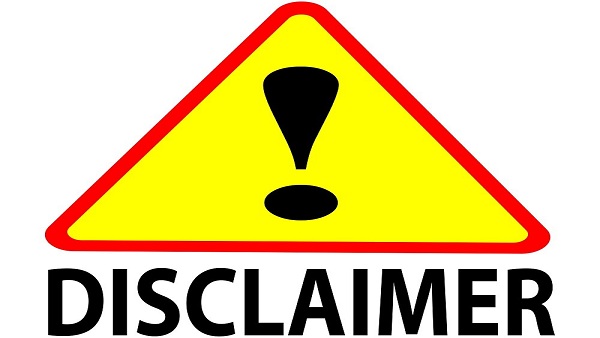Although yet another non-banking finance company (NBFC) is going the Dewan Housing Finance Corporation (DHFL) way and is being put through a debt-resolution process under the Insolvency and Bankruptcy code (IBC), this is unlikely to snowball into a bigger crisis as the country’s shadow banking sector is fairly resilient and adequately capitalised.
According to senior industry experts, there has been an improvement in the liquidity position of most NBFCs and business has been coming back to normal, both in terms of disbursements and recovery. So, there is no need to press the panic button yet.
Governance concerns
It is to be noted that the Reserve Bank of India (RBI) had, on October 4, superseded the boards of Srei Infrastructure Finance and Srei Equipment Finance, owing to governance concerns and defaults by the companies in meeting various payment obligations. It appointed Rajneesh Sharma, Ex- Chief General Manager, Bank of Baroda, as the administrator for these companies.
This is the second instance of the RBI invoking IBC provisions against an NBFC. The first time the central bank had initiated the process of resolution against an NBFC (DHFL) under the Insolvency and Bankruptcy (Insolvency and Liquidation Proceedings of Financial Service Providers and Application to Adjudicating Authority) Rules, 2019, was in 2019.
A special audit conducted by the RBI in December 2020 and January 2021 revealed ever-greening of loans, negative capital-to-risk (weighted) assets ratio (CRAR) and default in payments of over ₹10,000 crore to lenders, prompting it to supersede the boards of Srei Infrastructure Finance and Srei Equipment Finance. The Kolkata bench of the National Company Law Tribunal (NCLT) admitted the applications filed by the RBI on October 8 for initiating corporate insolvency resolution process against against the two Srei companies – Srei Infrastructure Finance and Srei Equiment Finance.
However, it is unlikely there will be any more new additions to the list of NBFCs to go under resolution, opine experts.
“This (Srei) has been on for quite some time now. It is not new. But we are not hearing of any new names (as of now). As of now, things look okay (for other NBFCs). Funding side has been better than what it was last year. Entities have been able to raise capital. So, capitalisation numbers have been okay.
“Though asset quality numbers for September are yet to come, from what we hear, disbursements are picking up, collections are improving. So, hopefully things should stabilise,” Karthik Srinivasan, Senior Vice-President, Group Head, Financial Sector Ratings, ICRA, told BusinessLine. According to YS Chakravarti, MD & CEO, Shriram City Union Finance, there are ups and downs in every industry, and the same would be true for the financial services sector as it is also not immune to the vagaries of nature and market.
“There are successes and there are failures…..it is not something terrible. Since it is a financial services industry, we should not blow it out of proportion. A majority of the NBFCs are comfortable on the liquidity front, they are raising money,” he said.
The RBI, in its latest annual report, said that in the aftermath of liquidity stress post the IL&FS and DHFL events, the market funding conditions turned difficult for NBFCs. “While NBFCs with better governance standards, robust business models and efficient operating practices did well and could raise funds, others bore the brunt of the market forces.
“Smaller NBFCs and microfinance institutions (MFIs), which were contributing significantly to the last-mile credit delivery, also got impacted as their funding sources got further squeezed,” said the central bank. In response, the RBI took several calibrated steps to channel credit flow into the NBFC sector and enhanced supervision to improve the sector’s long-term resilience.
Liquidity position
The IL&FS incident had turned the financial sector players, including banks and mutual funds, cautious in their approach towards NBFCs. That continued for a few quarters, but things were getting back to normal towards the last quarter of FY20.
However, in the first quarter of FY21 Covid broke out, impacting all industries, including NBFCs, and their recoveries were affected.
“But from July last year NBFCs’ liquidity position started improving, backed by several measures announced by the central bank, including TLTRO and partial credit guarantee scheme.
“By second half of last year, things were coming back to normal, but again in Q1 of the current fiscal, we had the second wave of Covid. So, their disbursements and collection efficiency came down,” Krishnan Sitaraman, Senior Director and Deputy Chief Ratings Officer, CRISIL Ratings, told BusinessLine.
Capitalisation has improved for a number of NBFCs, which helped them lower their leverage levels, and there has been an improvement in their liquidity position. Though there has been a drop in the collection efficiency, it is better than the situation last year. “On the balance sheet side, many of them have enhanced their resilience through provisioning, liquidity, capital. While larger entities may be able to manage the situation (better), smaller ones may face trouble for some more time.
“Funding access to NBFCs, particularly the larger ones supported by strong parent and highly rated, is improving. Some consolidation may happen (moving forward) where a larger NBFC may acquire a smaller one …. but I don’t see any reason for pressing the panic button,” said Sitaraman.
Small depositors, bondholders
The recovery is believed to be better and it also takes a shorter time (for recovery) through the IBC process.
However, it sometimes may lead to a huge haircut for lenders and a tough deal for small depositors and bond holders of NBFCs. According to Sitaraman, it is unlikely that there will be a significant impact of NPAs in the NBFC sector on the balance sheet of banks as they do not have a very big exposure in the sector. The total NPAs in the banking sector is estimated to be close to ₹8-lakh crore.
Even while the overall NPAs are expected to go up to around 8-9 per cent, those on account of NBFCs may not contribute to a significant chunk.
The asset quality of scheduled commercial banks improved during 2021-22 (up to June), with the overall non-performing assets (NPA) ratio declining to 7.5 per cent in June 2021 from 8.0 per cent a year ago, according to the RBI’s latest monetary policy report.
According to the RBI’s latest financial stability report, gross NPAs of NBFCs declined to 6.4 per cent (provisional based on data of 276 NBFCs of total asset size ₹38.8-lakh crore) as of March-end 2021 against 6.8 per cent as of March-end 2020. Their CRAR improved to 25 per cent from 23.7 per cent.
However, it will be a bloodbath for small investors and bond holders in companies such as Srei, said Mamta Binani, an insolvency resolution professional.
“Small investors and bond holders will be put at the mercy of law and it will have a crippling effect,” she said.
Small depositors and bond holders are typically considered unsecured creditors, and they tend to get whatever is left after paying the secured creditors.




















